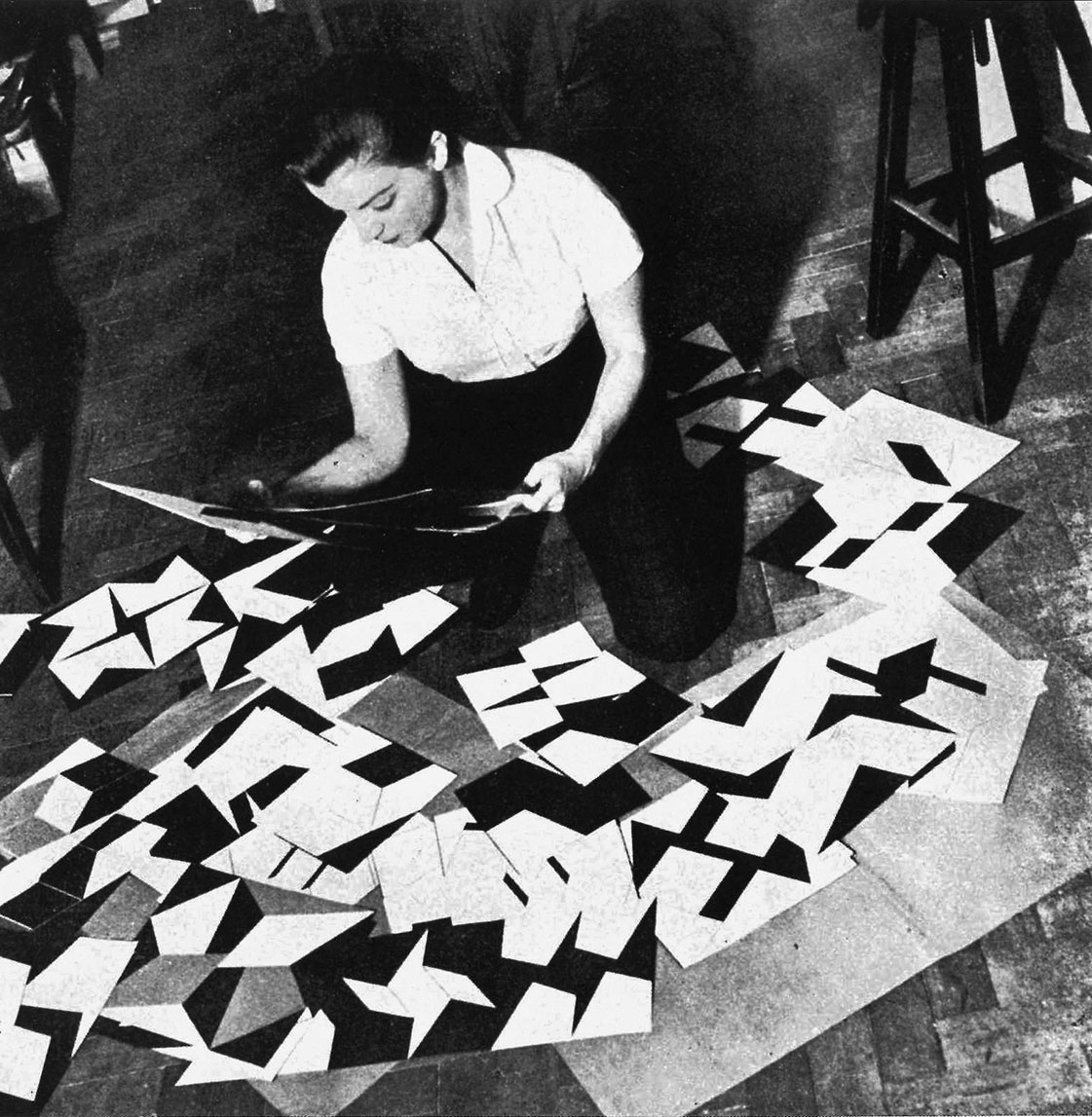
In Europe, abstraction was one of the languages chosen by artists in the first decades of the 20th century in their quest for a more modern and universal art. This led to the emergence of different movements like Constructivism in Russia, Cubism in Paris, De Stijl in Holland, and the Bauhaus school in Germany, characterized in general by a language of pure and precise geometric forms. Moreover, one idea that started to permeate these different isms was forging a more direct link between art and life and bringing art closer to the viewer.
World War II of 1939–1945 also affected the Southern Hemisphere. Once the conflict was over, the positions adopted by many Latin American countries during the war had an influence on their political, economic, and social lives, and by extension on their cultural and artistic development.
In Brazil, São Paulo became the main center of the country’s vast development, and a number of modernization initiatives were under way, including the creation of the new capital city, Brasilia, by the architect Oscar Niemeyer. There were also major cultural initiatives, such as the first edition of the São Paulo Biennial in 1951, where abstraction was the predominant language, and Concrete Art represented scientific and technological advances. Pure abstraction and rigurous rationalism were thus common characteristics of the two artistic centers that sprang up in Brazil in the 1950s.
In São Paulo, on the one hand, the artists of the Grupo Ruptura sought a renewal of the traditional values of art, which they considered a means of knowledge. Among the members of this group were Waldemar Cordeiro, Lothar Charoux, Geraldo de Barros, Kazmer Féjer, Leopoldo Haar, Luiz Sacilotto, and Anatol Władysław.
In Rio de Janeiro, on the other hand, the Grupo Frente worked with a greater freedom and a variety of techniques and materials in the representation of rigorous abstraction. Lygia Clark (b. 1920; d. 1988) formed part of this group together with Aluísio Carvão, Hélio Oiticica, Lygia Pape, Ivan Serpa and others. By 1959, Ferreira Gullar’s Neo-Concrete Manifesto had a great impact on these artists. In it, Gullar expounded his theory of the non-object, a category of artwork transcending that of painting or sculpture. Lygia Clark and the Frente artists embraced a new artistic practice with experimentations linked to life experiences in which the viewer was an active participant with the artwork.
Venezuela also received the influence of the European avantgarde with the group of artists known as Los Disidentes, who continued their investigation of Geometric Abstraction and Kinetic Art in Caracas after their return from Paris in 1952. Among those artists were Alejandro Otero and his Colorhythms (Coloritmos), Carlos Cruz-Diez and his Physichromies (Fisicromías), and Jesús Rafael Soto, whose development of kinetic works in Paris culminated in the 1960s with his iconic Penetrables.
In 1946, Argentina presented the first exhibition of Grupo Madí in Buenos Aires. The artists associated with this group aimed to continue the development of European abstraction by means of irregular frames, articulated planes, and movement, with the incorporation of new technologies like the neon of Gyulia Kosice’s Luminescent Madí Structure No. 6 (Estructura lumínica Madí 6, 1946). Carmelo Arden Quin and Rhod Rothfuss were other members of the group, whose work captured the constructivist and geometric modes of nonrepresentational art.
In Montevideo, after his return from Europe in 1943, artist Joaquín Torres-García created the Taller Torres-García, an atelier and art school based on Constructivist Universalism, which combined different artistic traditions and became the foundation for a painting based on the line, geometry, and color planes.
